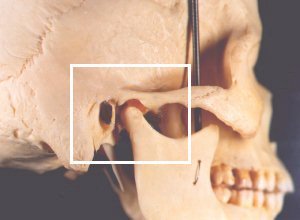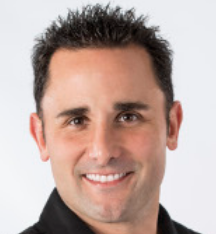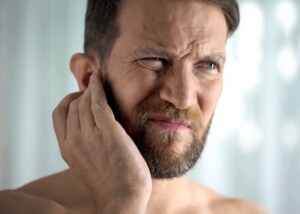A brief sharp pain above your ear when you yawn is definitely an unsettling experience.
It may make the sufferer wonder if there’s a tumor growing in that area that’s being pressed into by the yawning motion.
The good news is that this symptom does not make doctors suspect cancer or a benign tumor, nor is this a sign of a dangerous entanglement of blood vessels or a blood clot.
From time to time we may experience a brief ache or mild pain with a sudden and wide yawn.
But a sharp or piercing pain above the ear – that comes nearly every time you yawn or right afterwards – is strongly suspicious for temporomandibular joint disorder.
How a Yawn Can Cause Sharp Pain Above Your Ear
You’ve probably heard of “TMJ,” as in, someone telling you, “I have TMJ.” The proper term is TMJ disorder, TMJ-D or TMD. The TMJ is the temporomandibular joint: the jaw.
If you view your profile you can clearly see that the pivot point of the jaw (mandible) is right under the ear.

Jose Larena, CreativeCommons
It’s simple to say that if something is wrong with this joint, any nearby structure will be affected. For many TMJ-D patients, ear pain is an issue.
“TMJ is a disorder of the jaw joint and related structures where the ball (condyle), socket (fossa) and cushioning disk (meniscus) of the joint are damaged or misaligned,” says Jeffrey Haddad, DDS, of Doolin Haddad Advanced Dentistry in Rochester, MI.
“Over time, the meniscus [cartilage] becomes increasingly compressed and torn, allowing the bony structures of the ball and socket to deteriorate at an accelerating rate due to the grinding wear on the joint and the loss of cushioning effect of the meniscus,” explains Dr. Haddad.
“This grinding (crepitus) and concurrent pressure on the capsular ligament surrounding the joint can cause head pain and may create difficulty in opening or closing of the mouth.”
So if you get head pain with your yawning (whether or not you have ear pain), you just might have TMJ-D.
Dr. Haddad says, “The body attempts to realign the joint using the musculature in the face, jaw and neck. As these muscles become fatigued, range of motion laterally and opening/closing of the jaw is limited and can be painful at times.”
TMJ Disorder Doesn’t Always Mean Pain When Chewing or Biting
“Many people are familiar with TMJ symptoms like jaw pain, headaches, pain while chewing and clenching,” says Dr. Haddad.
“However, the misalignment of the joint can also affect the nearby ear structures due to pressure on the petrotympanic fissure and tympanic bone.
“The tympanic bone separates the jaw joint from the ear canal. The mandibular malleolar ligament (disco-malleolar ligament) connects the malleolus as this ligament traverses through the fissure to attach to the meniscus and the capsular ligament of the TMJ.”
What Happens During Yawning
“Excessive pressure or stretching of these structures can cause dysfunction and symptoms such as ear pain, tinnitus (ringing in the ears), vertigo (dizziness), subjective hearing loss, hyperacusis (increased sensitivity to sound), muscle pain and other symptoms,” explains Dr. Haddad.
“Patients with a TMJ disorder often have limited range of motion due to musculature tension as the body attempts to accommodate to the misaligned joint.
“Therefore, an excessive movement, such as a yawn, could be a very painful motion, especially in the ear region.
“With the TM joint as intimately associated with many ear ligaments and surrounding musculature, opening wide to yawn is very common in aggravation or causing ear pain and other ear symptoms.
“If a person is experiencing this type of ear pain, being evaluated for a potential TMJ disorder is recommended.”
This means seeing your dentist – something that many people neglect to do on a routine basis.

Dr. Haddad lectures nationally on cosmetic dentistry, TMJ disorders and practice marketing, and utilizes the latest technology to ensure the utmost in patient comfort and care.
 Lorra Garrick has been covering medical, fitness and cybersecurity topics for many years, having written thousands of articles for print magazines and websites, including as a ghostwriter. She’s also a former ACE-certified personal trainer.
Lorra Garrick has been covering medical, fitness and cybersecurity topics for many years, having written thousands of articles for print magazines and websites, including as a ghostwriter. She’s also a former ACE-certified personal trainer.
.














